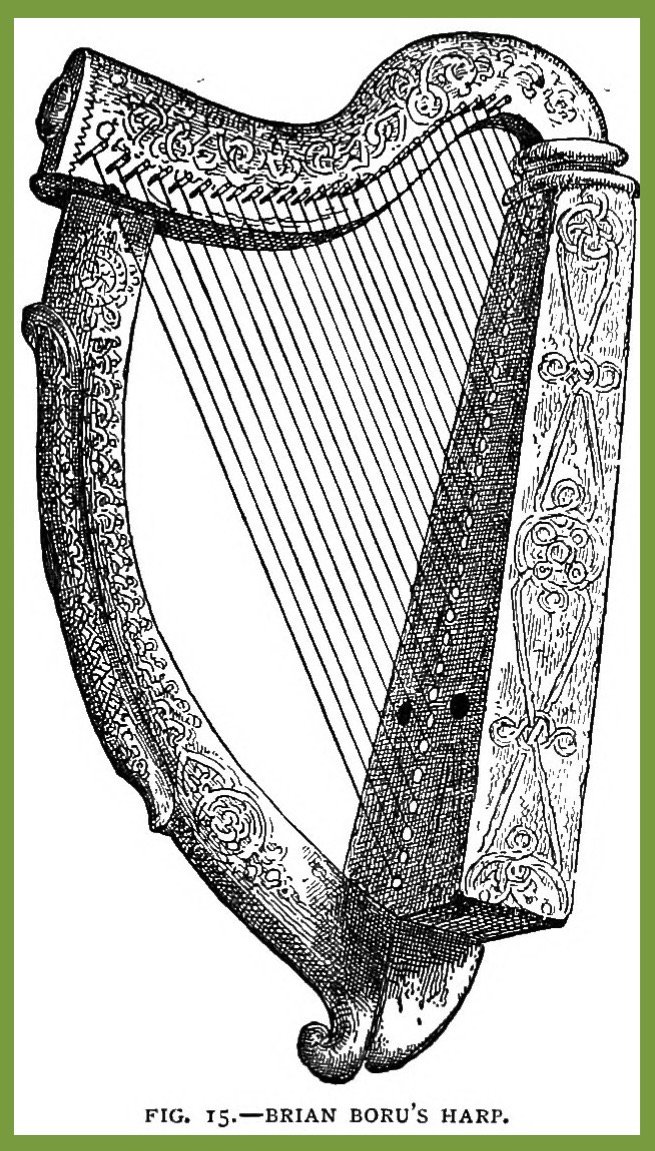Guinness & Company :
Guinness Draught
Proper glassware makes all the difference (sorry about the Bass Ale bar towel)! Not exactly the best pour, but rather close. If you visit the home brewery in Dublin you can take a short course on the proper pour. I should have done better - I have the diploma. Of course, when using the draught can you simply pour it in one shot, and let it settle out.
Without a doubt, Guinness Stout is the most recognizable Irish beer served in North American pubs. It is the benchmark by which all others are compared. To me, it is one of my standard, go-to, beers. I am never without it in the garage pub. I remember some 35 years ago, when I had to search dozens of package stores just to find a dusty four-pac of Guinness. It is what I had to do. Now, I can find it almost anywhere, and I celebrated the advent of the pub can. Plus, tons of North American pubs have Guinness on tap. Lovely!
Now, of course, Guinness is made, and shipped, all over the world, and as such there are certain variations from the original. Even the folks at Guinness note there are very small deviations from the home beer. But, the variances are small, and barely worth noting. I have had the freshest Guinness right from the home brewery - St James's Gate - in Dublin, to a bar as far away as Tokyo, all the way to a steamy, sweaty bar in Lagos, Nigeria, and have found that the taste is consistent. Also, from a tap or from a pub can, the taste is quite in line with the original. (Note: According to the folks at Guinness, Nigeria is actually the third largest market for Guinness Stout (been there - drank that) - the US is fourth.)
The view from the rooftop tasting room - the Guinness Gravity Bar - at the St James's Gate brewery, Dublin, Ireland. Lotta beer being brewed down there.
Quick story: A buddy and I were drinking in a country pub in the small town of Brick End, in the UK. The place was empty so when a younger couple came in we took a casual notice. As we covertly observed, both ordered pints of Guinness. Both carefully examined the pints served by the landlord, taking small sips, raising the glasses to the light, and even sticking a thermometer into the beer, noting everything down on paper. There followed a conversation with the landlord, after which the couple left the pub. They had barely drank an ounce or two of their Guinness. Intrigued, we asked the landlord what was up. He replied that it was just a normal visit from the quality control folks from the local Guinness distributor. They simply wanted to make sure the pub was serving Guinness properly. Good to know if you are a Guinness fan. Also, if anybody has a line on how I can get that job, please let me know.
Powerscourt Waterfall, Ireland
There is an old joke that says Guinness gets its water from the River Liffey, which runs through the middle of Dublin, since the St James's Gate brewery is located on the banks of the river. Not so. The water used to make Guinness at St James's Gate is actually from the Wicklow Mountains, several miles to the south of Dublin. This is a photo of the Powerscourt Waterfall, on the Dargle River, in the foothills of the Wicklow Mountains. Looks pretty pure to me.
The harp emblem or symbol that appears on Guinness products, including both its Extra Stout and its Harp Lager, is modeled after what is alternatively called the Trinity College Harp or the Brian Boru Harp. It’s actually a real thing, being an ancient Irish harp, or what was known as a cláireach. The actual harp itself, dating perhaps back to the 14th century, is housed at Trinity College, in Dublin. Many legends surround the origins and owners of the harp, while some old references indicate that the harp was once owned by Brian Boru (circa 941-1014) - in old Irish Brian Bóruma - a legendary kiing of Ireland.
For an old history of this harp, please click HERE. It is a chapter from the book “The Story of the Harp’” by W.H. Grattan Flood (Walter Scott Publishing Co, Ltd. London, 1905)
By the way, the right-facing harp is a symbol of Guinness, while the left-facing harp is the national symbol of Ireland.



